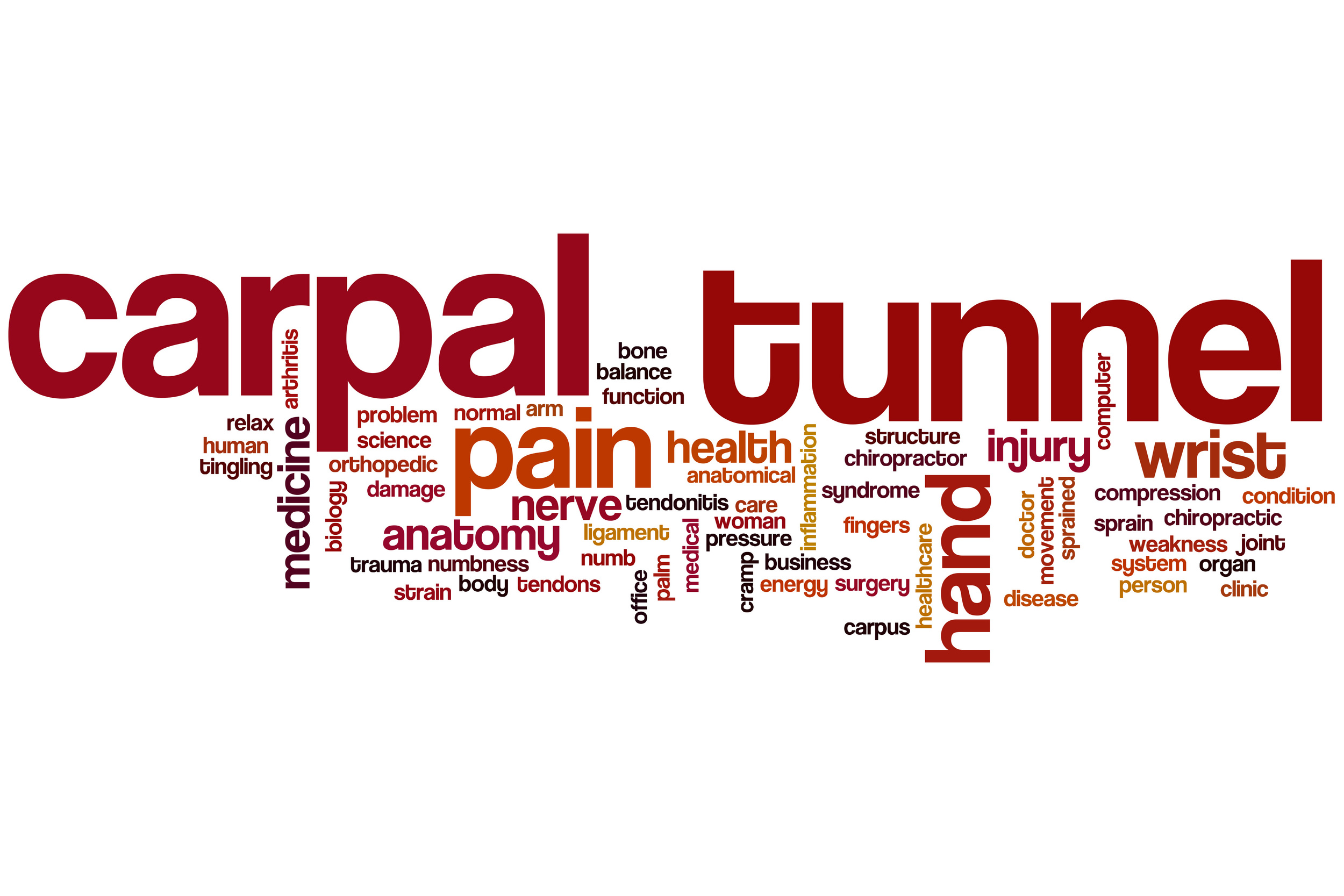Carpal Tunnel and Cubital Tunnel Treatment
What are Carpal, Cubital, and Ulnar Tunnel Syndromes?
Carpal tunnel syndrome occurs when the median nerve is compressed while traveling through the carpal tunnel, a narrow passageway made of bones and ligaments in the wrist. The carpal tunnel is intended to provide protection for the median nerve and tendons that pass through it. The median nerve is responsible for movement and sensation for parts of the hand, so irritation from compression can cause pain, numbness and tingling in the hand and wrist.
Cubital tunnel syndrome, also known as ulnar tunnel syndrome or ulnar nerve entrapment, is the second most common nerve entrapment after carpal tunnel syndrome. It occurs when the ulnar nerve, which travels from the shoulder, down the arm and into the hand, is compressed while traveling through the cubital tunnel, a small space within the elbow. The ligament that surrounds the ulnar nerve can thicken, compressing the nerve and causing pain, tingling, or numbness in the arm and certain fingers.
What causes Carpal, Cubital, and Ulnar Tunnel Syndrome?
The compression of the median nerve in the carpal tunnel can be caused by several factors. These include genetics, repetitive and prolonged hand use, injuries, and other medical conditions. Genetics is a factor if smaller carpal tunnels are present in the patient’s family history. Repetitive hand use, like use of vibrating machinery or bending of the hands, for long periods can also cause compression. Injuries to the wrist, like fractures, sprains or other kinds of trauma, can cause swelling or compression. Medical conditions like arthritis, diabetes, thyroid dysfunction or the development of tumors or cysts within the carpal tunnel can also compress the median nerve.
Like carpal tunnel syndrome, cubital tunnel syndrome can be caused by more than one factor. Repetitive use of the arm or elbow, including leaning on the elbow, can cause the ulnar nerve to be compressed, as can long-term pressure on the base of the palm. Injuries like fractures, dislocations, sprains or other trauma to the elbow can also cause this compression, as can underlying conditions like arthritis and diabetes, or conditions that cause long-term swelling and inflammation near the ulnar nerve. If the ulnar nerve moves back and forth as the elbow is bent and straightened, which can cause irritation over time, this can also lead to cubital tunnel syndrome. Women are more likely than men to get carpal or cubital tunnel syndrome. Pregnancy can also cause nerve entrapment because of fluid retention, but symptoms of carpal or cubital tunnel syndrome usually go away after delivery.
Symptoms and Diagnosis
Symptoms of carpal tunnel syndrome include:
- numbness and tingling on the palm side of the hand, fingers, and thumb
- pain or a burning sensation in the forearm, wrist, or hand that increases with activity may also be present
- weakness may also occur, as over time the muscles around the thumb will shrink and lose strength, resulting in trouble forming a fist or grasping objects
Symptoms of cubital tunnel syndrome may include:
- weakness, numbness or tingling in the palm or last two fingers
- pain or burning sensation in the elbow, palm, or last two fingers that increases with activity
- tenderness in the elbow joint, dexterity problems, and sensitivity to cold may also be present
How is it treated at this office?
Carpal tunnel and cubital tunnel syndrome are treated at Art of Health Chiropractic with a multi-faceted approach. We use a combination of manual adjustments, myofascial release, therapeutic exercises, and laser therapy.
Chiropractic adjustments - we make sure to mobilize the joints that surround the nerves - this helps to promote proper movement of the bones in the hand which can put pressure on the nerve, causing irritation.
Class IV deep tissue laser therapy - laser therapy works to decrease the inflammation and pain associated with these conditions, while also accelerating the healing of the damaged tissues.
Myofascial Therapy - your doctor will use a combination of myofascial techniques to reduce trigger points, remove scar tissue adhesions, and release nerve entrapments.
Kinesiotape - This procedure uses specialized tape to support the joints and muscle groups as they heal.
Therapeutic exercises are used to stretch and strengthen any associated soft tissues that have become damaged by this condition.
Dr. Callie Gant and Dr. Michael Buczynski founded Art of Health Chiropractic with the goal of creating a happier, healthier Nashville. Feel free to call the office at 615-953-7544 with any questions or to schedule your first appointment.


